Size and Fit: Shirts
For the first post of the “Size and Fit” series, I chose one of the most important pieces of menswear: the shirt. This is easily one of the most used items by men of all sorts, due to its versatility: pair a dress shirt with a power suit or an oxford shirt with chinos and you’re suitable for every occasion.
As I’ve mentioned in the previous post, most men aren’t aware of their correct size or how clothes are supposed to fit and as result they end up buying oversized pieces (usually one or two sizes up). The shirt is probably the item where most men go wrong: excess fabric creating bulges, misplaced shoulder seams, sleeves too long or wide, etc. Let’s face it, when it comes to ready-to-wear clothing it’s almost impossible to get a perfect fit: these items are mass produced to satisfy the majority of clients and body types: if you fail to meet the “standards” for which the piece was designed, chances are it will be ill-fitting. Now, I won’t assume everyone has the time, money or patience to purchase bespoke or made to measure clothes (which I recommend if you do), but there are a few tips you can follow to get the best out of off-the-rack clothing.
When it comes to shirts, my advice is to always try on two or three different sizes: when you try one that is uncomfortably small, buy one size above. Bear in mind that despite doing this, the shirt might still need some alterations (to fit your torso or to adjust sleeve length), which you can have done at the store or at your personal tailor. If you try one size down and still get the feeling the shirt is baggy on your body, this is due to the shirt cut and you should then try a slim fitting model (most brands have them nowadays). This type of shirt will adjust better to your torso and arms, giving you a slimmer figure and a better fit. To sum up, here are the three steps:
- Try on different sizes: if you think you’re a M take at least a S to the dressing room;
- If after sizing down the shirt is still baggy, go for a slim fit model;
- If after the above you feel the shirt’s not quite there yet, have it tailored for a perfect fit.
Notice that these steps are not in any particular order, I’ll leave that to your liking. I usually go straight for the slim fitting shirts and then size down or have it tailored. If you prefer a more traditional cut on your shirt, size down first and then have it tailored. It’s up to you.
In order to elucidate a few mistakes men are prone to make when buying shirts (I made them myself a couple of times), I took some photos with a fitting and an ill-fitting shirt. For a perfect comparison I would have to have the same shirt in different sizes, but either way you’ll be able to see the differences.
On the first set of pictures I’m wearing a Custom Fit Polo Ralph Lauren shirt in size M, which is a fitted version of the usual RL shirt. I’m fairly slim (1,80 m and 68kg) and a Medium is the size shop assistants usually recommend to me.



At a first glance, the shirt may seem to be somewhat fitting, especially depending on the angle at which you look at it.
It’s when you take a closer look at details that you get a glimpse of how oversized this shirt really is:
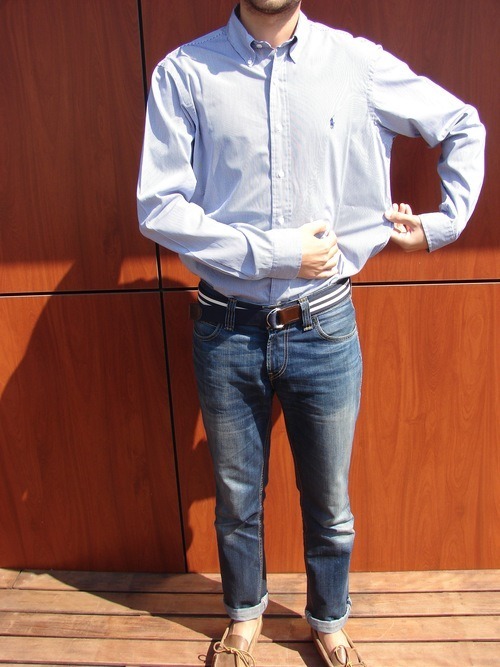
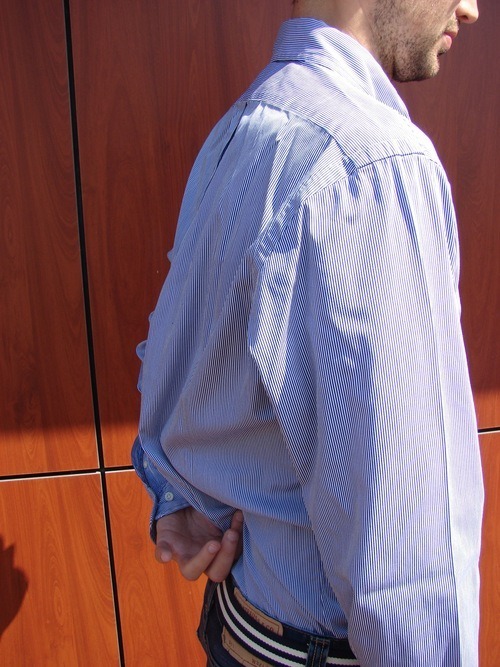
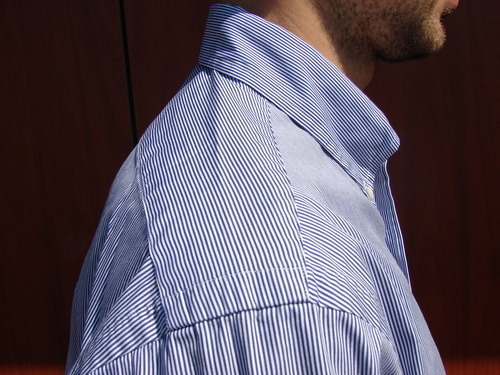

Top to bottom: 1 - excess fabric on the sides; 2 - excess fabric on the back; 3 - shoulder seam not sitting where it should and 4 - sleeves too long, with the cuff covering almost halfway through the hand.
On this second set of pictures I’m wearing a fitted H&M shirt, size S. When I bought this I tried on a M but found it too big.


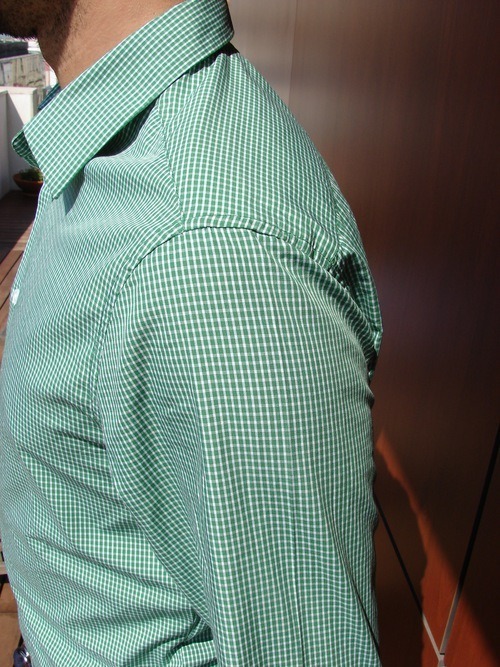


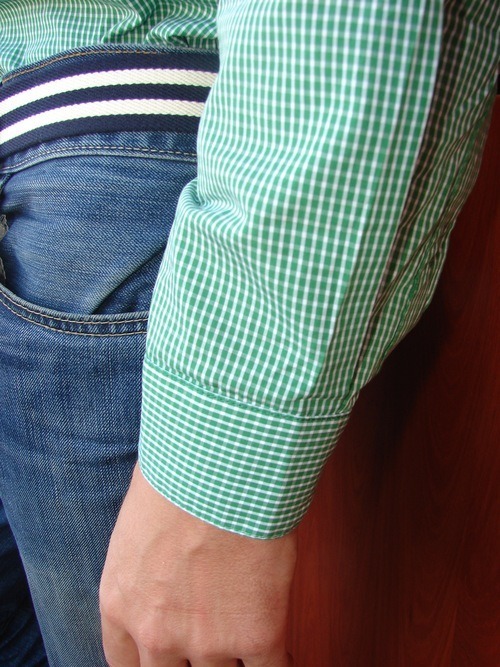
Notice the differences: the soulder seam is spot on, almost no excess fabric on the sides and back and the cuff sits right where it should (beginning of the wrist)
Hope this has been helpful and you remember these tips next time your out shopping for shirts. Keep an eye out for the next entry of Size and Fit!
23 notes
 podolllyco liked this
podolllyco liked this  elfen090 reblogged this from beyondfabric and added:
elfen090 reblogged this from beyondfabric and added: That is some interesting post
 elfen090 liked this
elfen090 liked this beyondfabric posted this



